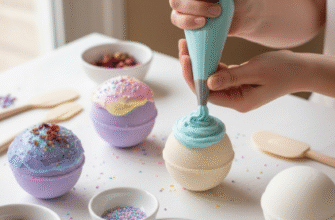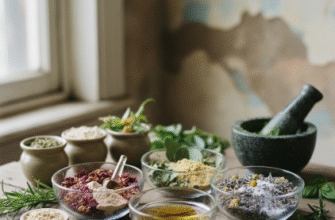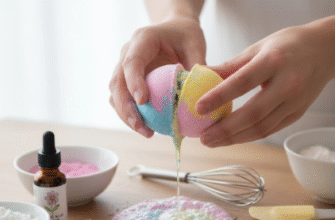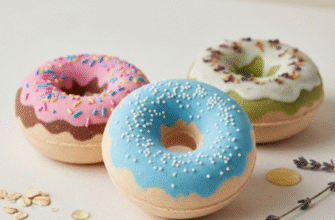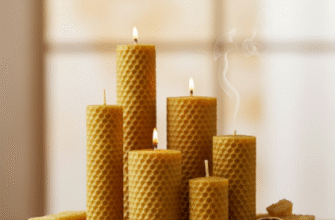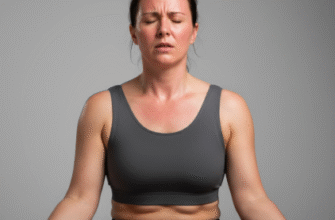Shaving, whether it’s your face, legs, or anywhere else, can leave skin feeling a bit raw, irritated, and generally unhappy. That familiar sting or tightness is your skin signaling it needs some calming care. While countless commercial aftershaves line the shelves, many contain alcohol, synthetic fragrances, and other ingredients that can actually worsen dryness and irritation for some people. If you’re looking for a gentler, more personalized approach, crafting your own natural aftershave balm is a rewarding and surprisingly simple project.
Creating your own balm puts you in complete control of the ingredients. You can tailor it precisely to your skin’s needs and scent preferences, avoiding potential irritants and embracing the power of nature’s soothers. Forget harsh chemicals and mystery additives; think nourishing butters, beneficial oils, and calming essential oils that work together to hydrate, soothe, and protect your freshly shaved skin.
Why Go Natural After Shaving?
The skin barrier is often slightly compromised after shaving. Razors exfoliate the top layer of skin, which is good, but they can also cause micro-abrasions and strip away natural oils. This leaves the skin vulnerable. Commercial aftershaves often rely on alcohol for its antiseptic properties and quick-drying feel, but alcohol can be incredibly dehydrating and cause that unpleasant burning sensation, especially on sensitive skin. Artificial fragrances, another common culprit, are frequent triggers for allergic reactions and irritation.
A natural balm, on the other hand, focuses on replenishing moisture and calming inflammation. Ingredients are chosen for their inherent properties:
- Deep Moisturization: Natural butters and oils sink into the skin, providing lasting hydration without greasiness when formulated correctly.
- Soothing Relief: Many plant-based ingredients possess properties that help calm redness and reduce the feeling of irritation.
- Gentle Protection: A balm creates a light barrier on the skin, helping to protect it from environmental factors while it recovers.
- Customization: You choose the scent, the texture, and the specific oils that work best for you.
- Avoiding Nasties: No parabens, phthalates, synthetic dyes, or harsh alcohols unless you decide to add something like witch hazel (which contains natural tannins but sometimes added alcohol – check labels if buying).
Key Ingredients for Your DIY Balm
Building a great natural aftershave balm starts with a solid foundation of carrier oils and butters, enhanced with the targeted benefits of essential oils.
Base Butters and Oils (The Foundation)
- Shea Butter: This is a powerhouse moisturizer, rich in fatty acids and vitamins (like A and E). It’s known for its creamy texture and ability to deeply nourish and soften the skin. Unrefined shea butter retains more of its natural properties but has a nuttier scent. Refined shea is odorless and smoother.
- Coconut Oil: A very popular choice, coconut oil is easily absorbed by some skin types and offers good moisturizing properties. Look for virgin, unrefined coconut oil. It’s solid at cooler temperatures but melts on skin contact. Note: Some people find coconut oil comedogenic (pore-clogging), so consider this if you’re prone to breakouts.
- Mango Butter: Similar to shea but often lighter and less greasy, mango butter provides excellent moisture and melts beautifully into the skin.
- Jojoba Oil: Technically a liquid wax, jojoba oil’s composition is remarkably similar to human sebum (the skin’s natural oil). This makes it readily accepted by the skin, providing lightweight moisture without clogging pores. It’s great for balancing oil production.
- Sweet Almond Oil: A gentle, nourishing oil rich in Vitamin E, suitable for most skin types. It absorbs reasonably well and helps to soothe dryness.
- Beeswax (Optional, for firmness): If you prefer a firmer, less melty balm, adding a small amount of beeswax (pellets are easiest to measure) will provide structure. It also adds an extra layer of protection on the skin. Candelilla wax is a vegan alternative.
Essential Oils (The Soothing Scents & Boost)
Essential oils add therapeutic scent and can offer additional skin benefits. Always use them diluted in carrier oils/butters, as applying them neat can cause severe irritation. A little goes a long way!
- Lavender: Renowned for its calming aroma and skin-soothing properties. A classic choice for relaxation and reducing the appearance of redness.
- Chamomile (Roman or German): Gentle and calming, chamomile essential oil is excellent for sensitive skin, helping to soothe discomfort.
- Tea Tree: Known for its cleansing properties. Use sparingly, as its scent is quite strong and medicinal. It can be helpful for preventing minor bumps, but patch test carefully.
- Frankincense: Has a grounding, earthy scent and is often used in skincare for its toning and rejuvenating associations.
- Sandalwood: Offers a warm, woody aroma and is known for its skin-soothing qualities. Ensure you source it sustainably.
- Peppermint (Use with extreme caution): Provides a cooling sensation, which can feel nice after shaving, but it can also be irritating for many. Use only 1-2 drops per batch maximum and patch test diligently. Avoid near the eyes.
Optional Additions
- Vitamin E Oil: A potent antioxidant that helps to nourish the skin and also acts as a mild preservative, extending the shelf life of your balm slightly.
- Aloe Vera Gel: While fantastic for soothing, incorporating water-based ingredients like aloe vera gel into an oil-based balm requires an emulsifier and preservative to prevent separation and bacterial growth. For a simple DIY balm, it’s easier to apply aloe vera gel *before* the balm or stick to oil-soluble ingredients.
Recipe: Simple Soothing Aftershave Balm
This recipe creates a basic, effective balm. Feel free to adjust the oils based on your preferences and what you have available. This makes approximately 2-3 ounces (60-90ml).
Ingredients:
- 2 tablespoons Shea Butter
- 1 tablespoon Coconut Oil
- 1 tablespoon Jojoba Oil (or Sweet Almond Oil)
- Optional: 1 teaspoon Beeswax pellets (for a firmer balm)
- 5-10 drops total of Essential Oils (e.g., 4 drops Lavender, 3 drops Chamomile, 1 drop Frankincense)
- Optional: capsule of Vitamin E Oil (pierced and squeezed out)
Equipment:
- Small saucepan and heat-safe glass bowl (for double boiler) OR a dedicated double boiler
- Small whisk or spoon for stirring
- Clean, dry tins or jars with lids (2-3 oz capacity total)
Instructions:
1. Set up Double Boiler: Fill the small saucepan with an inch or two of water. Place the heat-safe glass bowl on top, ensuring the bottom doesn’t touch the water. Bring the water to a gentle simmer over low-medium heat. Avoid boiling vigorously.
2. Melt Butters/Oils/Wax: Add the shea butter, coconut oil, and beeswax (if using) to the glass bowl. Allow them to melt slowly and completely, stirring occasionally. Maintain low heat.
3. Add Liquid Oil: Once the solids are fully melted, remove the bowl from the heat. Stir in the liquid carrier oil (jojoba or almond oil).
4. Cool Slightly: Let the mixture cool for a few minutes. It should still be liquid but not piping hot. This helps prevent the essential oils from evaporating too quickly or degrading.
5. Add Essential Oils & Vitamin E: Stir in your chosen essential oils and the contents of the Vitamin E capsule (if using). Mix thoroughly but gently to ensure even distribution.
Patch Test First! Before applying any new homemade product or essential oil blend liberally, always perform a patch test. Apply a small amount to an inconspicuous area of skin, like your inner elbow. Wait 24-48 hours to check for any signs of redness, itching, or irritation. This is crucial, especially if you have sensitive skin or are trying new essential oils.
6. Pour into Containers: Carefully pour the liquid balm into your clean, dry tins or jars.
7. Cool and Solidify: Place the containers on a flat surface and allow the balm to cool completely and solidify. This can take a few hours at room temperature, or you can speed it up slightly by placing them in the refrigerator for about 30-60 minutes. Avoid the freezer, as it can affect texture.
8. Label and Store: Once solid, cap your containers tightly. Label them with the ingredients and the date made. Store your homemade aftershave balm in a cool, dark place away from direct sunlight and heat sources. Properly stored, it should last for several months (the addition of Vitamin E helps, but always check for changes in smell or texture before use).
Using Your Natural Aftershave Balm
Using your creation is the best part! After shaving and rinsing your skin thoroughly (pat dry gently, don’t rub vigorously), take a small amount of balm – usually a pea-sized amount is sufficient – onto your fingertips. Warm it slightly by rubbing your fingers together. This helps it spread more easily.
Gently massage the balm onto the shaved areas using upward strokes. Take your time; allow it to absorb. Your skin should feel instantly more comfortable, soothed, and hydrated without feeling overly greasy. Because it’s concentrated, remember that a little goes a long way.
Customizing Your Creation
The beauty of DIY is adaptation. Don’t like coconut oil? Swap it entirely for mango butter or increase the shea butter. Prefer a woodsy scent? Try sandalwood, cedarwood, and a touch of frankincense. Want extra richness? Add a teaspoon of avocado oil. For a lighter feel, use more jojoba oil relative to the heavier butters.
Experiment with different combinations (always researching essential oil safety and recommended dilution rates!) until you find the perfect blend that leaves your post-shave skin feeling calm, happy, and healthy. Enjoy the process and the naturally soothing results!

